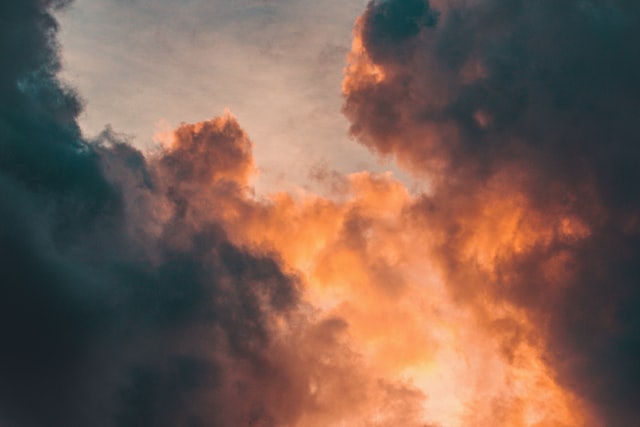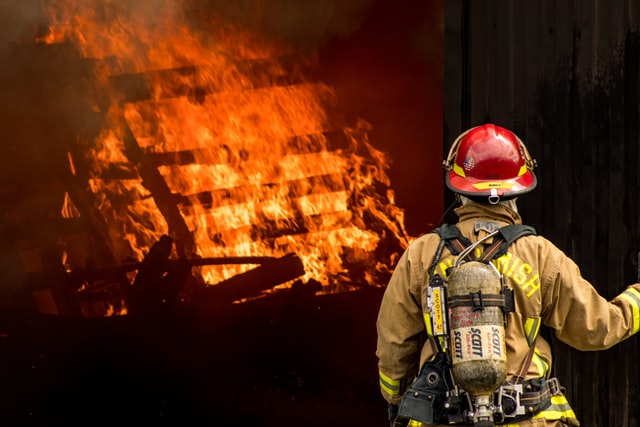Over the past few weeks, massive wildfires have swept the West Coast of the United States, spreading north past the Canadian border. Further inland, wildfires have broken out in Colorado, Idaho, Arizona, and Montana. Although fire season is a normal, yearly occurrence, this year’s wildfires have been devastating on a scale the region has never seen before. Some fires were sparked by downed power lines, others were caused by lightning strikes, and still others were set by arsonists—but scientists have stated that climate change is contributing to the severity of the wildfire season in 2020.
The fires burning across California have been covered extensively in the media, and with good reason. In early September, the August Complex wildfire became the largest fire in the state’s history, and with over 3.2 million acres burned, this year’s wildfire season has broken frightening records. But this year, areas that are not typically affected by wildfires to this extent have also faced catastrophic damage.

In Oregon, where the normally rain-soaked forested regions are not particularly prone to wildfires, nearly a million acres have burned. Even after welcome rainstorms last week, ten active fires continue to burn. Higher than average summer temperatures and dry, windy weather have allowed the fires to spread, prompting local governments to place 500,000 residents under evacuation orders, among which thousands were told to be ready to leave at a moment’s notice.
“I’ve lived in Bend, Oregon for 16 years. While summer fires have been a recurring theme in this region, there is nothing that has taken on the magnitude of what is currently going on,” said Peaceful Dumpling contributor Amanda Brown. “Towns have been demolished, people have lost their homes, others have lost their lives. Some of the prettiest areas throughout this region have been reduced to ash…The office that I work in is permeated with smoke. I haven’t cracked a window in 5 days. I feel suffocated in a place where I have always felt free.”
Residents of nearby Washington are facing a similar crisis, with ten large wildfires burning throughout the state and 500,000 acres burned as of early September—and as I write this piece, the figure continues to increase. Plumes of smoke from the fires in Washington, Oregon, and California billow across the state, darkening the skies and making it difficult to breathe. “My most prevalent thought is hoping this doesn’t become our new normal. It’s heartbreaking to watch climate change make its impact so clearly just over the last few decades I’ve lived here,” said Peaceful Dumpling contributor Lindsay Frederick, who lives in Seattle. She noted that while many people hadn’t expected climate change to dramatically affect our quality of life for decades, “here it is now, hovering in the air around us.”
The wildfire season has also been unusually destructive in Colorado, where the Pine Gulch fire has become the largest in the state’s history. With residents living so high above sea level, merely breathing has become taxing. “The sun is an eerie red, and the mountains that are usually so clear to see have disappeared under all of the soot,” said Peaceful Dumpling contributor and Denver resident Iga Kamierckzak. “Living in such a high altitude on top of the poor air quality due to the fires makes it hard to breathe. We stay indoors as much as possible now not only because of the pandemic but also the rough, dry air that rips through your throat.”

In every region affected by the wildfires, the air quality has become significantly worse. Last week, the worst air quality in the world was recorded in Portland, and Seattle, San Francisco, and Los Angeles weren’t far behind. “The hardest thing about this was by far the inability to breathe,” said Peaceful Dumpling editor Juhea Kim, who lives in Portland. She sealed her condo after Labor Day to keep the smoke out, but as the oxygen levels in her home gradually became depleted, she worried that she would need to be hospitalized if she stayed. She decided to spend some time at her parents’ larger home, yet the oxygen eventually became depleted there, too. “Both my parents (in their sixties) and I are experiencing symptoms like breathlessness, mental fogginess, leaden limbs, heart palpitations, kumquat-sized painful lump in the throat, and more,” she said. “I feel as though my brain is running at 50% capacity…Without air, we truly cannot survive.”
In the midst of this tragedy, COVID-19 continues to spread, one crisis unfolding on top of another. Those evacuating may be left with few options for places to go—staying with high-risk family members could be out of the question, people who have been unemployed for months could struggle to afford a hotel room, and while thousands have been displaced to shelters, this is a risky last resort for those who are high-risk for the virus. Essential workers who cannot stay home struggle to protect themselves from exposure to the virus and the soot in the air, but cloth masks do nothing to protect against inhaling smoke. Some residents of towns that have been burnt to the ground were already out of work as a result of the pandemic, and now, settling down somewhere new and finding employment will be extremely challenging. In some areas threatened by the wildfires, inmates were evacuated and transferred to overcrowded prisons, creating prime conditions for the virus to spread.
Trying to maintain some semblance of normalcy and stability throughout the pandemic has proven practically impossible for the millions who have lost their jobs, their loved ones, and the futures they had planned. Now, the West Coast must contend with another disaster, while COVID-19 cases and deaths keep increasing. These events paint a bleak picture of the next decade, illustrating how the challenges we face will be exacerbated by climate change. There could be no clearer warning to act—if we fail to do so, the coming years will not bring relief.
Get more like this—Sign up for our daily inspirational newsletter for exclusive content!
__
Photo: Unsplash




